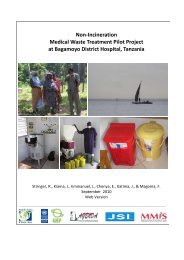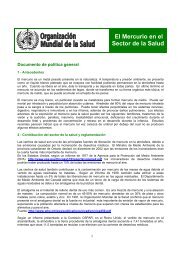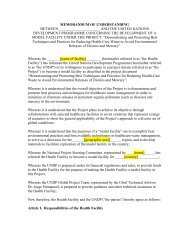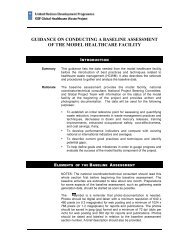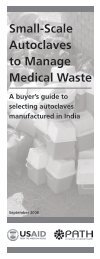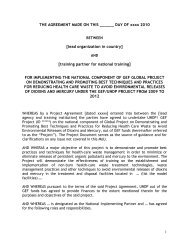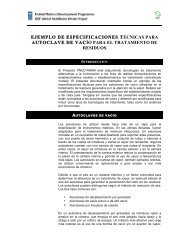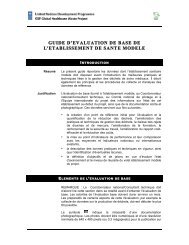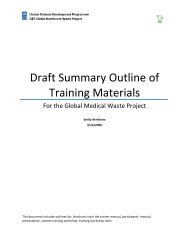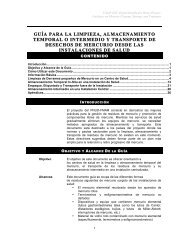Latvia
Latvia
Latvia
You also want an ePaper? Increase the reach of your titles
YUMPU automatically turns print PDFs into web optimized ePapers that Google loves.
Health systems in transition<br />
<strong>Latvia</strong><br />
were merged together in order to reduce geographical differences and diminish<br />
administrative costs. It was decided that at least 200 000 people living in one<br />
geographical area should be served by one regional (trans-municipal) institution.<br />
The merge process met resistance from local governments, as they wanted to<br />
maintain their leadership and control. However, the process resulted in six<br />
transregional and two state funds being established, all governed by the SCHIA.<br />
As of 1 January 2005 the eight funds were eliminated and their functions were<br />
transferred to the SCHIA and its five territorial branches.<br />
In 1994, priority was also given to an additional reform, involving the<br />
introduction of a primary health care (PHC) system. The sickness funds<br />
estimated the number and location of PHC practices that would be necessary<br />
to cover the entire population. In 1998 the SCHIA founded the Primary Health<br />
Care Support Fund, which, together with international assistance organizations,<br />
funded the retraining of physicians as general practitioners (GP) as well as<br />
setting up PHC practices. Every inhabitant of <strong>Latvia</strong> was to register with a<br />
family physician. Family physicians began to be paid on the basis of a mixed<br />
capitation system.<br />
In the area of reimbursement systems for health care services, a number of<br />
different approaches have been introduced, abandoned and changed since the<br />
early 1990s. For a number of years, fee for service, capitation and capitation with<br />
fund holding, diagnosis-related groups (DRG) and volume-based contracting<br />
systems all existed at the same time, depending on the area of health care,<br />
level of care and geographical area. More recently a unified payment system<br />
has been adopted for providers throughout the country (Section 3.7 Payment<br />
mechanisms).<br />
Some health facilities have been privatized or partially privatized, leading to<br />
the establishment of a wide variety of property ownership in the system. Since<br />
the early 1990s such innovations as the purchaser–provider split and family<br />
health care have been introduced as the basis for PHC. Private supplementary<br />
insurance has also been introduced, initially offered by the Riga sickness fund,<br />
in parallel with private insurers.<br />
In addition, virtually every other aspect of the health care system has<br />
been affected by the process of reforms, including the pharmaceutical sector,<br />
public health, dentistry and others. As the above examples illustrate, <strong>Latvia</strong> is<br />
experimenting with several innovative approaches to organization and financing<br />
in health care. The reforms are an ongoing process, with rapid changes that are<br />
influenced by a mix of changing political priorities of successive governments<br />
and the learning process that comes from experience with novel approaches.<br />
All of these are described in detail in the following chapters.<br />
34





